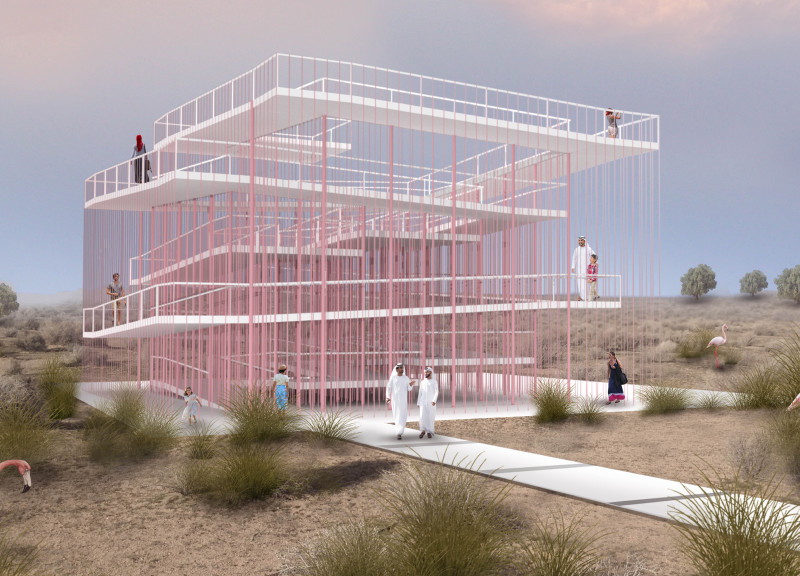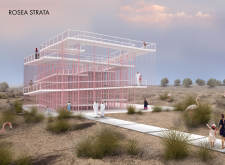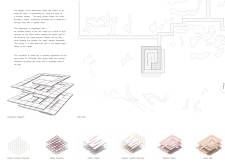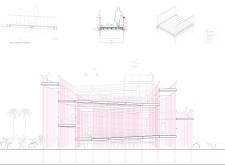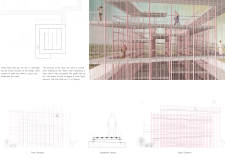5 key facts about this project
## Overview
"Rosea Strata" is an observatory tower designed to enhance accessibility within a desert context. Intent on creating an engaging visitor experience, the structure incorporates natural elements alongside architectural features. The primary focus is to facilitate user navigation through an innovative zig-zag ramp system that leads to elevated viewing points, fostering interaction with both the architecture and the surrounding landscape.
## Spatial Strategy
The design employs a dynamic circulation strategy characterized by a continuous ramp system, allowing for an immersive spatial experience. The layering of the structure not only provides practical access but also directs visitor movement, encouraging exploration. The interplay between different spatial layers is intended to enhance visual interest, as the use of pink ropes contributes to a sense of enclosure while maintaining transparency and openness.
## Design Elements
### Materials and Aesthetics
Materials chosen for the construction include a robust steel framework, transparent glass panels, and pink ropes, which create a distinctive visual identity. The combination of these materials serves both functional and aesthetic purposes: the glass allows for unobstructed views, while the steel provides structural integrity. The use of concrete as a foundational element further ensures durability.
The vibrant pink tones are intentionally selected to enhance the building's integration with the surrounding desert environment, evoking warmth and inviting visitor engagement. The contrasting textures of the smooth glass and rough concrete amplify the overall visual appeal, enhancing the sensory experience as visitors navigate the space.
### Environmental Integration
The design reflects a conscious effort to harmonize with the surrounding ecology, acknowledging the local flora and fauna. By positioning the structure to complement the natural landscape, including adjacent grasslands and wildlife such as flamingos, the observatory facilitates a dialogue between the built and natural environments, encouraging an educational experience that emphasizes conservation and interaction with nature.


